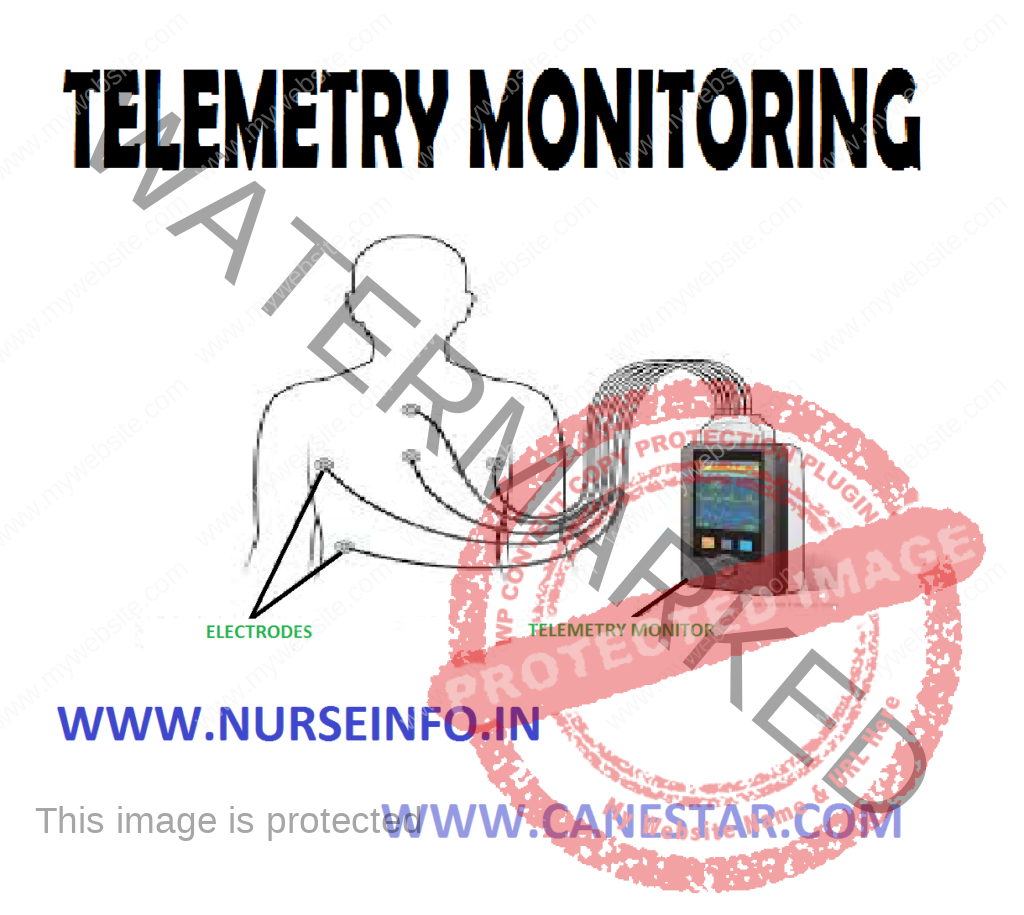TELEMETRY MONITORING – Definition, Advantages, Components, Disadvantages, Client Preparation and Procedure (NURSING PROCEDURE)
Telemetry permits the nurse to keep a watch on the client’s heart rate and rhythm during this period of early ambulation. As soon as the client’s condition permits, he may be allowed ambulation. Battery powered and portable, telemetry frees the client from cumbersome wires and cables and lets him be comfortably mobile and safely isolated from the electrical leakage and accidental shock occasionally associated with hardwire monitoring
DEFINITION
Telemetry uses a small transmitter connected to the ambulatory client to send electrical signals to another location, where they are displayed on a monitor screen
ADVANTAGES
- Telemetry is especially useful for monitoring arrhythmias that occur during sleep, rest, exercise or stressful situation
- Telemetry can monitor cardiac rate and rhythm during ambulation
- Telemetry system gives complete mobility as well as freedom from the hardware of the coronary care unit
COMPONENTS
- Electrodes to be fixed on the client’s chest
- Telemetry transmitter attached to client’s body
- Monitoring system in the nurse’s station
DISADVANTAGES
- This system lies in the frequency of false alarms caused by the client going out of range of telemetry system and by disconnection of electrodes
CLIENT PREPARATION
- Explain the procedure to the client and provide privacy
- Expose the client’s chest and select the lead arrangement
- Remove the backing from one of the gelled electrodes. Check the gel for motions. If it is dry, discard the electrode and obtain a new one
PROCEDURE
- Apply the electrode to the appropriate site by pressing one side of the electrode against the client’s skin, pulling gently and then pressing the other side against the skin
- Press your fingers in a circular motion around the electrode to fix properly on the skin


